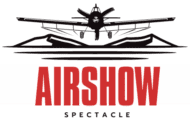Understanding Ramp Checks in Aviation
In aviation, safety and compliance are paramount. One crucial mechanism to ensure these standards is the ramp check. A ramp check, essentially, is an inspection process conducted by aviation authorities to ensure aircraft and operators meet safety regulations. These checks are not just for commercial airlines but can be for private pilots and operators as well.
What Happens During a Ramp Check?
The process usually begins with the arrival of an inspector at an airport ramp where aircraft are parked. The inspector can be from the Federal Aviation Administration (FAA) in the United States or similar bodies in other countries. They remain identifiable by their official credentials.
Once on the ramp, inspectors focus on various areas. They may start with a pilot’s documents. This includes checking the pilot’s license and medical certificate. They must be current and valid. Inspectors also review aircraft documentation. This includes the airworthiness certificate, registration, and the aircraft’s maintenance records.
The aircraft itself undergoes physical inspection. Inspectors look for any signs of damage or wear that could compromise safety. They pay close attention to control surfaces, landing gear, and fuel systems. Presence of required safety equipment, like life vests and fire extinguishers, is verified.
Why Are Ramp Checks Conducted?
Ramp checks help ensure compliance with aviation regulations. They serve as a proactive measure to identify potential safety risks before they cause incidents. The primary goal is to improve safety for everyone involved in aviation. By catching issues early, ramp checks can prevent accidents and ensure seamless operations.
Beyond immediate safety concerns, ramp checks also uphold regulatory fairness. They ensure all operators are meeting the same standards. This maintains competitive fairness among airlines and operators. It also boosts passengers’ confidence that aviation safety standards are uncompromised.
What Are Inspectors Checking?
Detailed inspections cover various aspects. Documentation checks include:
- Pilot’s license and medical certificate
- Aircraft airworthiness certificate
- Registration and insurance papers
- Recent maintenance records and logs
Physical inspections delve into:
- Visible damage or wear on the aircraft
- Functionality of lights and control surfaces
- Condition of the tires and landing gear
- Presence and integrity of safety equipment
Operational readiness is another critical check. Inspectors may verify weight and balance calculations. They might review pre-flight checklists and passenger briefing cards. Compliance with specific regulations depending on flight operations and aircraft type is crucial.
How to Prepare for a Ramp Check
Preparation is key to a successful ramp check. Pilots should ensure all personal and aircraft documents are up-to-date. Conduct thorough pre-flight checks consistently. Make sure maintenance logs reflect all recent work on the aircraft. Organize documents for easy access during an inspection.
Maintaining a culture of compliance goes beyond paperwork. Regularly inspect and service all safety equipment. Adhere strictly to all operation protocols and checklists. Pilots must stay informed about the latest aviation regulations and standards. This builds confidence and preparedness for any inspection.
About Surprise and Routine Checks
Ramp checks can be routine or surprise. Routine checks are scheduled, providing ample notice to operators. Surprise checks, however, occur without prior warning. Both types aim to ensure compliance but have different psychological impacts on operators.
Routine checks allow operators to showcase their best practices, while surprise checks test their day-to-day compliance. Regardless of the type, cooperation with inspectors is vital. A professional attitude and transparency can lead to smoother inspections.
Potential Outcomes of Ramp Checks
Successful ramp checks usually end with minimal disruption. The inspector acknowledges compliance, and operations resume. However, non-compliance can result in various penalties. These range from a warning for minor infractions to grounding the aircraft until issues are resolved.
In severe cases, recurring non-compliance could lead to investigations. It may affect an operator’s reputation and result in fines. It underscores the importance of continuous compliance. The broader aviation network benefits from standards consistently upheld by all operators.
“`
